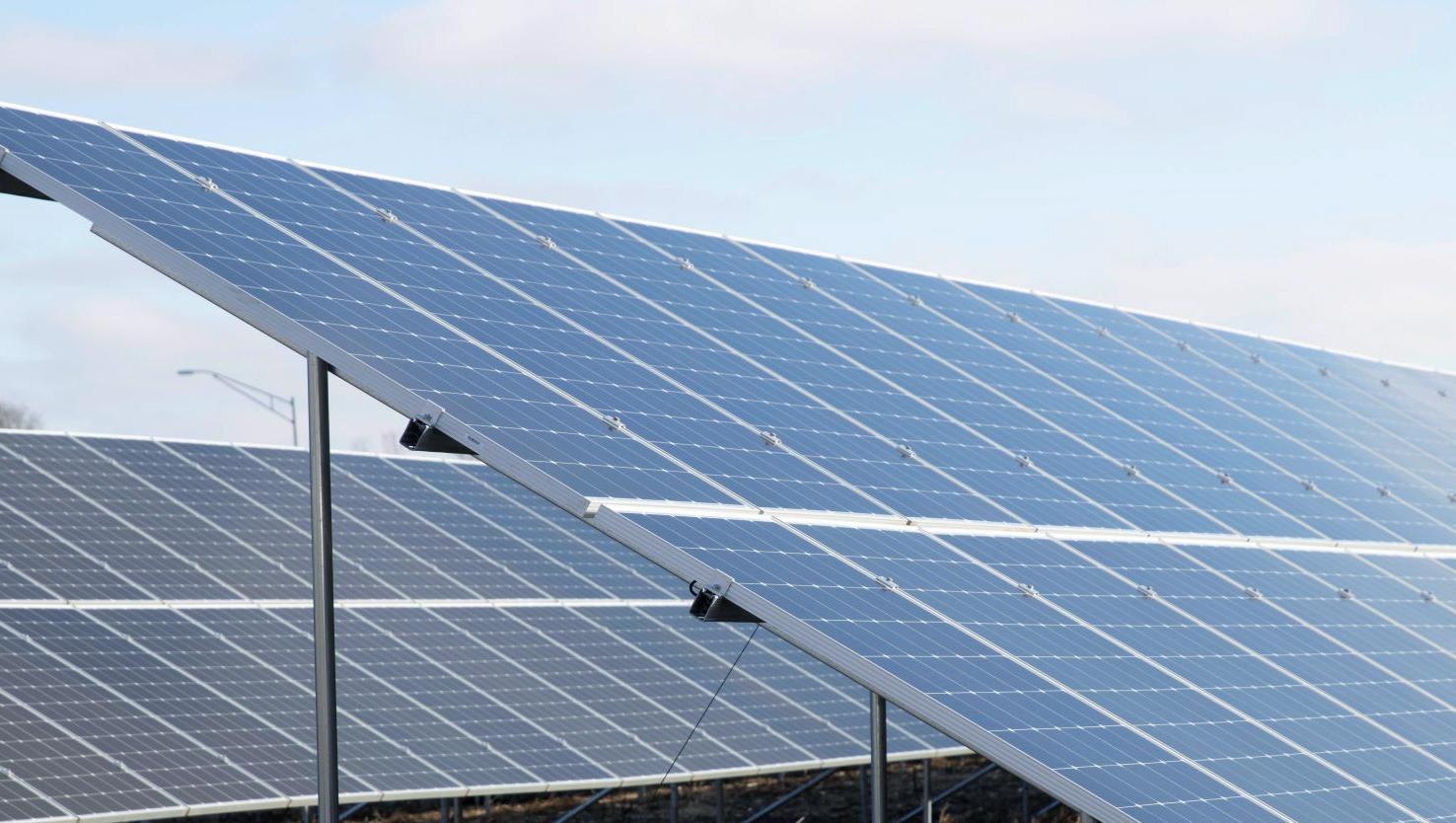Solar panels and wind turbines, which are expected to generate 44% of America’s electricity by 2050, pose a cybersecurity risk.
 Iowa State engineers are working to secure renewable energy sources, such as the Ames SunSmart community solar farm, from cyberattacks. Image Credit: Photo courtesy of the City of Ames.
Iowa State engineers are working to secure renewable energy sources, such as the Ames SunSmart community solar farm, from cyberattacks. Image Credit: Photo courtesy of the City of Ames.
They have sensors, controllers, actuators, or inverters that are connected to the internet, either directly or indirectly. They can be found all over the country and in the countryside. Many people’s connections to legacy electric grid systems are insecure. They have a physics that is quite complicated. Advanced persistent threats are a serious risk to them. And there will be more and more of them going online.
According to Gelli Ravikumar, a research assistant professor of electrical and computer engineering at Iowa State University, cybersecurity systems that “prevent, detect, and mitigate” attacks on renewable sources sending power to the grid are needed.
Gelli is leading a group creating those systems as part of the US Department of Energy’s $12 million, six-project effort.
Investing in cutting-edge cybersecurity technology keeps us at the forefront of global innovation and protects America’s power grid in the face of increasing cyberthreats from abroad.
Jennifer Granholm, US Secretary of Energy
Cybersecurity Through Artificial Intelligence
With a three-year, $2 million grant, the energy department is assisting the Iowa State-led project. The scientists will investigate, develop, and prove a physics-based system that uses artificial intelligence tools to enhance the cybersecurity of the country’s energy delivery systems, dubbed “GridDeep” by the scientists.
The project’s next-generation, AI-integrated cyber-physical security technology and tools can aid in ensuring energy delivery systems are designed, installed, operated and maintained to quickly recover from cyberattacks.
Gelli Ravikumar, Research Assistant Professor, Electrical and Computer Engineering, Iowa State University
Artificial intelligence technology, according to Gelli, will assist electricity producers to comprehend their systems, immediately respond to attacks, and restore critical functions because those energy delivery systems are complicated and continually shifting.
Partners Building Innovative Solutions
Manimaran Govindarasu, an Iowa State Anson Marston Distinguished Professor in Engineering, the Murray J. and Ruth M. Harpole Professor in Electrical and Computer Engineering, and a co-leader of the research team, said the project is especially timely because “a lot of green energy is being integrated into the grid. We want to make sure that this renewable integration is secure and resilient.”
According to Govindarasu, one great hurdle is that these renewable energy sources function more like small municipal or cooperative power plants. There are fewer resources available to protect them, and there are more opportunities to attack them.
We need innovative solutions. And we need the potential to scale up.
Manimaran Govindarasu, Anson Marston Distinguished Professor, Engineering, Iowa State University
Scientists from Iowa State, the University of Texas at El Paso, the Electric Power Research Institute, Duke Energy, Alliant Energy, Google, OSIsoft, and Schweitzer Engineering Laboratories are working on the project, which they say will take a team effort to secure the increasing number of renewable power sources.
We’re bringing together IT companies, energy-system vendors and utility companies. This will be an opportunity to leverage their expertise and advance this technology. There will be quite a bit of synergy, collaboration and innovation.
Manimaran Govindarasu, Anson Marston Distinguished Professor, Engineering, Iowa State University
Gelli adds that this will lead to “cyber-physical security tools and technologies that are not yet available today but can become widely adopted throughout the energy sector to reduce the risk that a cyber incident could disrupt energy delivery systems.”